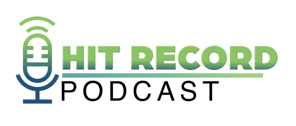Episode 93 - Why Customer Rention is More Important than Acquision for your Bank or Credit Union


Don't Miss An Episode, Subscribe Now

In this episode of the FI GROW podcast, CEO Meredith Olmstead and Sales Director Danielle Fancher dig into a powerful conversation around customer acquisition vs. retention—and why focusing on deeper relationships with your existing members may be your most overlooked growth opportunity. From defining true onboarding to real-world tactics that work, they share actionable strategies to personalize, automate, and maximize every new relationship at your credit union or community bank.
Key Takeaways:
-
Retention Costs Less—and Delivers More: It costs 5–7x more to acquire a new customer than to deepen a relationship with an existing one. Strong onboarding = stronger ROI.
-
Onboarding Is More Than a Thank-You Note: True onboarding is a multi-channel, personalized, data-driven experience that nurtures product adoption and trust.
-
Personalization Drives Growth: When onboarding is tailored to each user’s actions and needs, customers are more likely to open 3+ new products in their first 12 months.
Transcription:
Meredith Olmstead:
Hi, there. I'm Meredith Olmstead, CEO and founder of FI GROW Solutions. We are digital marketing and sales and service consulting agency. We work exclusively with credit unions and community banks. I am here with our sales director, Danielle Fancher. Say hi, Danielle.
Danielle Fancher:
Hello.
Meredith Olmstead:
Danielle and I had a really interesting conversation yesterday about priorities for banks and credit unions. We were talking to another consultant and it got us thinking about some really important topics for our current clients and possible new clients out there. I said to Danielle, "Let's pause, let's hit record on this and discuss this issue."
What we wanted to talk about today, the difference between acquisition and retention or deepening relationships with customers. There's the difference between trying to get out to new markets for banks and credit unions and acquire new members, or new customers, versus retaining and deepening your relationships with your existing customers. Danielle, just remind everybody how did this start? We were talking with a consultant yesterday who we work with on a variety of things around growth, for financial institutions specifically. Remind that conversation and why we were still thinking about it today basically.
Danielle Fancher:
Yeah. We jumped on a call with her yesterday and she was talking to Meredith and I about how whenever she meets with new prospects or new bank and credit union clients, that she oftentimes asks them, "What does it cost you guys to acquire a new member. What is it costing you to retain an existing member?" Then she even took it a step further and asked, "How much money are you making whenever you acquire a brand new member or customer? And how much more money are you making if you are to retain and deepen the relationship with an existing customer?" I mean, I was sitting there like, "Why have I not thought of this? Why have I not thought about this whenever I'm having conversations with clients also?" Did some research and now we're having this conversation.
Meredith Olmstead:
Yeah. So basically the cost to acquire a new customer is kind of a pretty generic figure, and you do it across industries. In financial products and services, for banks and credit unions, that cost typically to acquire the full cost to acquire a new customer or a new member for credit unions is usually for banks a little lower than credit unions, but in the three to $400 range to get a new person in the door. Then to deepen your relationship with those members, with that customer, is a fraction of that price if you do a good job of onboarding those new relationships. I think we saw a stat that it's costs somewhere between five to seven times more to acquire a new customer than to retain one and grow that relationship.
In this conversation that we were having yesterday, we were talking about the use of data and data science to do a better job of segmenting existing customer databases and push out new potential products and services based on their transactions, based on their propensity to buy a new financial product or service. That's why it's so important because you have all this low-hanging fruit. You have these people, they know your brand and they are already doing business with you, but if you're not onboarding them in a really strategic and effective way, you are leaving money and leaving this relationship on the table, metaphorically, because that is really where you have the potential to grow as an institution.
Growth doesn't have to come from brand new people, it doesn't have to come from new digital ads, it can come from deeper relationships with your existing customers. If we're talking about onboarding, because we do a lot of this with HubSpot, onboarding for clients, and I know you do this through sales enablement with clients, what do we mean when we say onboarding? How do we know if it's not going well or if an onboarding program is probably less effective than it could be?
Danielle Fancher:
Yeah. I mean, as you know, I've worked in the credit union and banking space since 2011, so I've seen a lot of effective and a lot of very ineffective onboarding. Onboarding is not having your staff write a thank-you card one time for opening an account, and hopefully they write it and hopefully it gets in the mail and hopefully it gets to them. That is not onboarding. It's not working off of an Excel spreadsheet or a report, it's not manual processes. That's not effective onboarding. Unfortunately in the banking space that is defined as onboarding, Hey, write a thank-you card three days later and hope it gets to them. Then hopefully they're going to want to do their loans with us and open a checking account and a money market account. That's just not the reality of onboarding.
What we consider effective onboarding at FI GROW, and for the clients that we work with, we actually do working calls with the frontline staff. We want to hear from them and ask them, "What are you hearing? What's the experience like for the customers and the members that you're working with? What do you feel like is important?" Then we take that back to the executive team and we work through an actual six-month, sometimes longer, onboarding process of making sure that we are deepening the relationships with these new customers and with these new members. What that looks like is education, it's promoting the credit union, it's promoting and cross-selling additional products and services. It's a bunch of information that we provide in very short, direct, clear, concise emails to these new members where we're promoting the credit union and we're staying top of mind to them. Again, it's not just sales, it's about educating them, it's about providing the resources that they need and keeping the credit union and bank top of mind for this new member.
Meredith Olmstead:
Yeah. An effective onboarding is also going to be personalized. You're not going to send the same emails to everybody, it's going to be based on real characteristics of that individual on the accounts that they have open, on the products or services that they have started to use, versus things that they have not enrolled in. If they've already signed up for online banking, you're not going to be promoting online banking to that individual new customer. Instead, you might be prompting them to set up their direct deposit after they've already ... Because you know from your data what they've done and what they haven't done. It really is about being helpful and providing the right information to the right person, at the right time. You have to have a connected system between your core, possibly and hopefully, through some transaction data or other kinds of real-time member data, talking to your automated programs that are then sending out these onboarding messaging.
We like to do it across multiple channels. So yes, it's email, but also you can text individuals. If you're trying to get a review from somebody who just converted, the best way to get a Google review for a branch location is via a text and a straight link on a mobile device. That's the fastest way to do it. You're going to have people calling them as well. Sometimes you're going to have people who are a little older or who might have a question and they might need a phone call or follow-up from somebody. You are going to send them direct mail. Yes, of course. Direct mail is still a thing. Sending a signed, personalized thank-you card goes a long way. It's not that that's not part of onboarding, but it's not the whole thing.
Danielle Fancher:
Right. Right.
Meredith Olmstead:
Then you're going to want to also make sure you're personalizing all of their interactions with your digital assets. There are new members, so they should have a different experience when they go to your website, than somebody who's been with you for 15 years. They need to learn more about the brand, who you are, what you're doing, what their options are, versus somebody who's been a member for a really long time and might be more interested in one specific product or service that they've recently visited. You can be personalizing all these different channels for a really robust and effective onboarding experience.
Danielle Fancher:
Yeah. One of my favorite onboardings that we have, that I've looked up, one of our strategists works with a client out in, I think it's in Georgia possibly, but their onboarding is absolutely beautiful. It's custom to each individual. It's not just the onboarding process, but if we know that they opened a checking account, we're not going to advertise checking accounts whenever they come to that client's website, we're talking about auto loans, we're talking about something that's relevant to them. We don't talk about and display different ads for checking, we are displaying ads and services for products and services that they have not yet taken advantage of. It's real-time, it's very custom. It's very personalized to each individual.
Meredith Olmstead:
Yeah. I think you found a cool stat, a well onboarded customer or member is more likely to open three plus products in the first 12 months. It's just known. If you don't onboard someone well and in a robust manner, you can lose them as a potential deeper relationship because they think, "Oh, you might've been good for this one product," a home equity line of credit, maybe you had a great rate special and you brought somebody in, but then you never meaningfully reached out to that person to try to save them money or make their lives better in any other way. After six months or a year, hey, they're gone. They might use your home equity line of credit, they might not. They just might keep it in their back pocket for a rainy day or an emergency, but they're not going to consider you for other ways to help improve their financial well-being. That's where a good, meaningful personalized onboarding program needs to come into place.
Some of the benefits that we have seen are that it can increase retention, you can obviously increase the number of products per member or per household, and that they refer people and give you reviews. So really, really important stuff. Anything else you can think of that you've seen really effective that works really well in onboardings with new customers that we can mention?
Danielle Fancher:
Yeah. I worked at a credit union several years ago who was really big in indirect lending, so we were doing consumer auto loans. A lot of the business, the bulk of the business, was coming from dealerships that we had developed really positive relationships with. Well, as you know, when they come in through that channel, they think that you just do auto loans. A lot of people don't understand that full process of we're actually a full service financial institution. FI GROW actually built out the onboarding for this credit union that I worked at, it was indirect lending onboarding. Some of the things that we did in there was, or that we had, we offered a promotional rate for them to refinance another vehicle with us, or we went ahead and pre-approved them for a credit card because we felt like if we were going to approve you for an auto loan, you can definitely get approved for a credit card, so we made sure that that offer was presented to them. We offered them an incentive to open a checking account with us.
I was really surprised. Not knowing much about onboarding at that time, and then seeing it actually created and developed, and actually in play, we had a ton of people reaching out to us, telling our loan officers, coming into our branches, wanting to open new accounts, I got this email, I got an email to refinance another vehicle with you. As we know in the banking and credit union space, we keep our staff pretty lean, and this made it really easy. I mean, it was such an effort to create the automated onboarding, and then people were calling us. We weren't having to do anything. They were automatically enrolled in these, and then they were calling the credit union and wanting to do more business with us. Overall, I just think it's a really positive experience to have good onboarding in place.
Meredith Olmstead:
Yeah. Yeah. I think it can be a challenge if you don't have a good automated platform for marketing and sales, that can be tricky. You can definitely connect the dots with a variety of strategies and tools. I think it is just really, really essential.
Thank you so much, Danielle. I appreciate you having a quick chat with me today about this. If you're interested in learning more about digital onboarding or other marketing services for your bank or credit union, please visit us at figrow.com. We have lots of great resources there, other blogs, podcasts, case studies. Otherwise, let's just all get out there and make it happen.








Blog comments